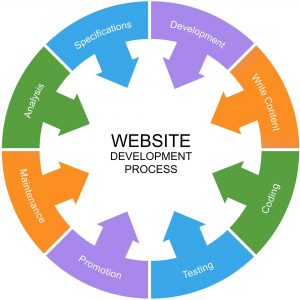Are you thinking about creating a new website for your business or personal brand? If so, it’s essential to understand the seven stages of website development to ensure that your website is functional, user-friendly, and optimized for search engines. In this blog post, we’ll walk you through each stage, from planning to maintenance.
Stage 1: Planning
The planning stage is crucial as it sets the foundation for your entire website. During this stage, you’ll define the purpose of your website, outline your target audience, create a site map, and develop a content structure.
Stage 2: Design
The design stage is where the visual elements of your website are created. This includes the layout, color scheme, typography, and any images or graphics. A visually appealing and professional design can make all the difference in creating a positive user experience.
Stage 3: Content Creation
Content is king in the world of websites, and this stage involves creating or gathering the content that will populate your website. This includes text, images, videos, and other media that will engage your audience and convey your message.
Stage 4: Development
In this stage, your website comes to life. Developers use various programming languages and tools to build your website, integrating the design and content to create a functional website that meets your needs and those of your audience.
Stage 5: Testing
Testing is crucial to ensure that your website is functioning correctly and that all links, forms, and interactive elements are working properly. This stage involves comprehensive testing to identify any issues that need to be resolved before your website goes live.
Stage 6: Launch
Once your website has been tested and any issues have been resolved, it’s time to launch it to the world! This involves deploying your website to a live server, making it accessible to your audience.
Stage 7: Maintenance
Finally, it’s important to regularly maintain and update your website to ensure that it continues to function correctly, remain secure, and meet the needs of your audience. This includes updating content, fixing any issues that arise, and making any necessary improvements.
Conclusion:
Creating a successful website requires careful planning, attention to detail, and a commitment to ongoing maintenance and improvement. By understanding the seven stages of website development, you can ensure that your website meets the needs of your audience and helps you achieve your online goals. Whether you’re creating a website for your business or personal brand, these stages provide a roadmap to success.


